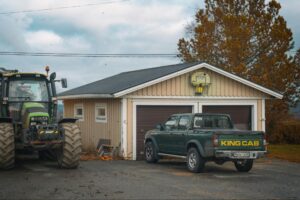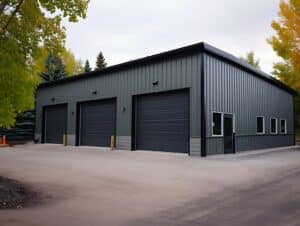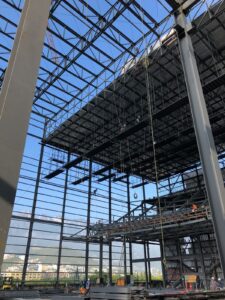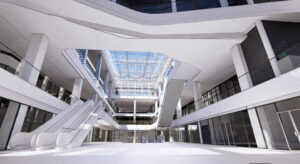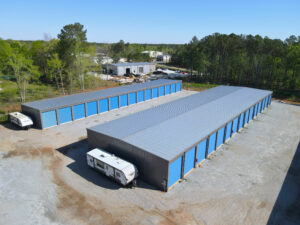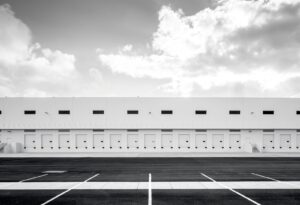When it comes to creating the perfect dog park building, understanding the design is essential. Between 2009 and 2020, there was a 40 percent increase in the building of public dog parks across North America.
These designated spots for canine exercise have become commonplace in major cities, and many pet owners now prioritize apartments with their own fenced-in pet areas for their furry companions.
A dog park not only provides a space for our canine companions to socialize and exercise but also offers numerous cost-saving benefits for their overall health and well-being.
In this article, we will explore the basics of building a dog park, discuss the importance of such facilities for canine health, and provide insights into planning, designing, and implementing your dream dog park.
Table of Contents:
- Understanding the Basics of a Dog Park
- Planning Your Dream Dog Park Building
- Designing the Park Layout
- Safety Measures to Consider
- Conclusion
- Frequently Asked Questions
Understanding the Basics of a Dog Park
Importance of a Dog Park for Canine Health
A dog park plays a vital role in maintaining the physical and mental well-being of our furry friends. Dogs are social animals by nature, and regular socialization with other dogs is crucial for their emotional development.
Dog parks provide an ideal setting for dogs to interact, which can help reduce anxiety and aggressive behavior.
Regular exercise is another essential aspect of canine health. A dog park offers a safe and spacious area for dogs to run, play, and burn off energy. This physical activity not only keeps them fit but also improves cardiovascular health, strengthens muscles, and helps maintain a healthy weight.
But did you know that dog park buildings also offer numerous mental health benefits for our canine companions? When dogs engage in play and socialization with other dogs, their brains release endorphins, which are natural mood enhancers. This can help alleviate feelings of stress and anxiety, leaving them feeling happier and more content.
In addition to the mental and physical benefits, dog parks also provide an opportunity for dogs to learn and practice important social skills. Interacting with other dogs teaches them how to communicate effectively, read body language, and establish boundaries.
These skills are not only important for their interactions with other dogs but also for their overall behavior and interactions with humans.
Check out: A Guide To Metal Horse Barns
Essential Features of a Dog Park Building
When planning your dream dog park building, it’s crucial to consider the necessary features that will make the park enjoyable and safe for both dogs and their owners. Some key elements to include are:
- Secure fencing: A sturdy perimeter fence ensures dogs can roam freely without the risk of escaping.
- Separate play areas: Designating different zones for small and large dogs allows for safer play and prevents potential injuries.
- Water stations: Providing clean drinking water is essential to keep dogs hydrated during their playtime.
- Shade and seating: Installing shaded areas and comfortable seating allows owners to relax while keeping an eye on their dogs.
- Waste management stations: Proper disposal facilities help maintain cleanliness and hygiene within the park.
- Agility equipment: Incorporating agility equipment such as tunnels, ramps, and hurdles can add an extra element of fun and challenge for dogs, promoting physical and mental stimulation.
- Dog-friendly landscaping: Creating a visually appealing environment with dog-friendly plants, trees, and grass can enhance the overall experience for both dogs and their owners.
By including these essential features, you can create a dog park that not only meets the basic needs of dogs but also provides an enriching and enjoyable experience for all.
Remember, a well-designed dog park is not just a place for dogs to run and play, but also a space that fosters socialization, learning, and overall well-being.
Pro tip:
Installing water stations near shaded spots can also help keep dogs hydrated during playtime.
Planning Your Dream Dog Park Building
Identifying the Right Location
Choosing the right location for your dog park is crucial for its success. Consider areas that are easily accessible to the community and have ample parking space. Additionally, ensure the park is situated away from residential areas to minimize noise disturbances.
When selecting a location for your dream dog park building, it’s essential to also think about the surrounding environment. Look for a spot with natural features like trees or grassy areas that can provide a more enjoyable experience for both dogs and their owners.
Access to walking trails or proximity to other pet-friendly establishments can also enhance the overall appeal of the park.
Determining the Size of the Park
The size of your dog park will depend on various factors such as population density, the number of dogs in the area, and available land. Aim for a large enough space to accommodate multiple dogs comfortably, including separate areas for small and large breeds.
When considering how to build a dog park, think about incorporating agility equipment or obstacle courses to keep dogs mentally and physically stimulated.
Providing designated areas for activities like fetch or frisbee can cater to different play preferences and ensure a well-rounded experience for all visitors, both canine and human.
Considering the Local Climate
Take into account the local climate when deciding how to build a dog park. Provide shaded areas and consider installing water features or pools to help dogs cool off during hot summer days.
Similarly, incorporate sheltered spaces to protect dogs and their owners from rain or extreme weather conditions.
In addition to considering the local climate, think about incorporating sustainable elements into your dog park building design.
Utilizing eco-friendly materials for benches or waste stations, planting native vegetation to promote biodiversity, and implementing energy-efficient lighting can not only benefit the environment but also create a more inviting and harmonious space for all park users to enjoy.
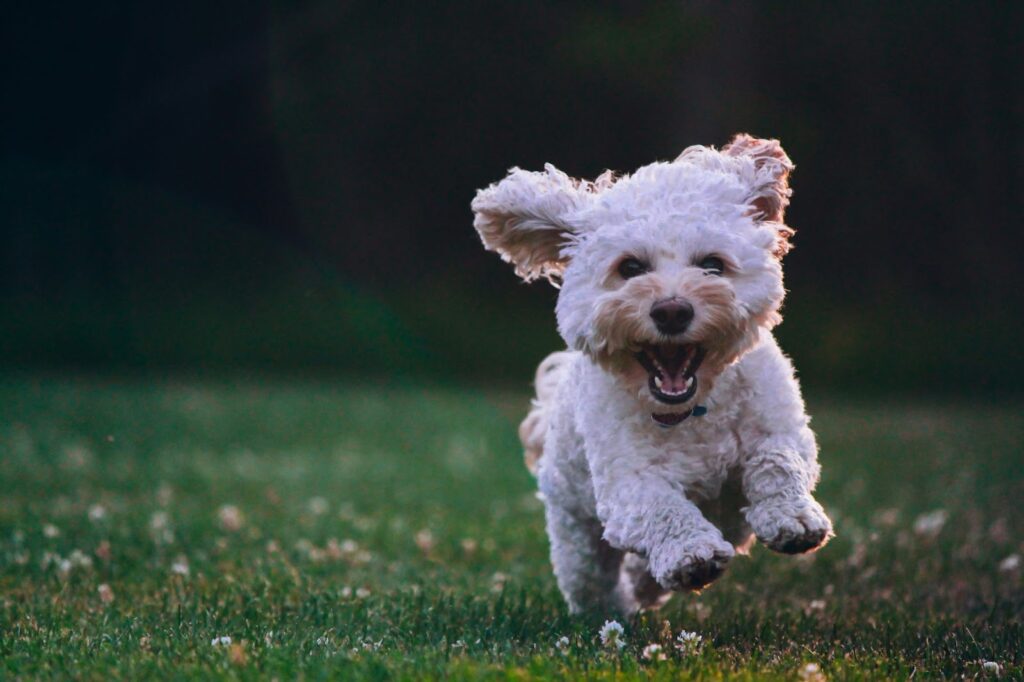
Designing the Park Layout
Creating Separate Areas for Different Dog Sizes
When designing your park’s layout, it’s important to create separate play areas for different dog sizes. This segregation ensures the safety and comfort of all dogs, as it minimizes the risk of potential conflicts or injuries.
Integrate fencing or barriers to divide the areas and mark entrances and exits to prevent accidental mixing of dogs between zones in the park building.
Furthermore, when designing separate areas for different dog sizes, it’s crucial to consider the specific needs and behaviors of each group. Larger dogs may require more open space for running and playing, while smaller dogs might prefer areas with more hiding spots and smaller obstacles to navigate.
By tailoring each section to cater to the unique characteristics of different dog sizes, you can create a harmonious environment where all dogs can enjoy themselves safely.
Pro tip:
When designing a dog park building layout, prioritize flexibility and adaptability. Incorporate modular elements like movable fences and agility equipment to create different zones for play, training, or rest. This allows you to easily reconfigure the space to accommodate varying dog sizes, energy levels, and interests.
Incorporating Play Structures and Obstacles
A well-designed dog park includes various play structures and obstacles to keep dogs mentally stimulated and physically active in the building. Consider adding agility equipment, such as hurdles, tunnels, and ramps, to provide dogs with opportunities for exploration and exercise.
In addition to agility equipment, incorporating interactive elements like puzzle toys and scent games can engage dogs’ instincts and provide mental enrichment. These activities not only keep dogs entertained but also promote problem-solving skills and cognitive development.
By offering a diverse range of play structures and obstacles, you can cater to different play styles and energy levels, ensuring that all dogs have a fulfilling and engaging experience at the park.
Check out: Commercial Construction In Woodstock GA
Planning for Shade and Seating Areas
Shade is essential in a dog park to protect dogs from excessive heat and sun exposure. Incorporate trees, canopies, or covered structures within the park to provide ample shade options.
Additionally, provides comfortable seating areas for pet owners to relax and socialize while keeping an eye on their furry friends.
When planning for shade, consider the orientation of the sun throughout the day to ensure that shaded areas remain cool and comfortable for both dogs and their owners. Installing water stations near shaded spots can also help keep dogs hydrated during playtime.
Furthermore, incorporating natural elements like grassy areas or artificial turf in shaded zones can create a relaxing environment for dogs to rest and recharge between play sessions.
By strategically designing shade and seating areas, you can enhance the overall experience for both canine visitors and their human companions.
Safety Measures to Consider
Ensuring Proper Fencing and Gates
The safety of dogs within the park is of utmost importance. Install high-quality fencing that is secure and tall enough to prevent dogs from jumping over or digging underneath. Regularly inspect and maintain fences to ensure they are in good condition.
Equally important are well-designed gates that can be easily opened and closed by dog owners while preventing accidental escapes or entrapments.
Additionally, consider adding a double-gate system at the entrance of the park to create an airlock-style entry.
This design helps prevent dogs from bolting out of the park when the gate is opened and provides a secure area for leashing and unleashing pets.
Providing Adequate Lighting
Good lighting is essential for dog parks that operate during evening hours or in areas with low visibility. Adequate lighting ensures the safety of both dogs and their owners, allowing them to navigate the park with ease and confidence.
To enhance safety further, consider incorporating motion sensor lights that illuminate specific areas as visitors and their furry companions move around the park.
This not only improves visibility but also adds a layer of security by deterring unwanted intruders during off-peak hours.
Addressing Sanitation and Waste Management
Maintaining cleanliness within the dog park is crucial for the health and well-being of all users. Provide waste management stations equipped with waste bags and disposal bins strategically placed throughout the park. Regularly empty and clean these stations to ensure a hygienic environment.
Furthermore, consider implementing a composting system for dog waste to promote eco-friendly practices within the park.
By composting pet waste, you can reduce landfill contributions and potentially create nutrient-rich soil for landscaping purposes within the park, fostering a sustainable and environmentally conscious community of dog owners.
Pro tip:
Contrary to popular belief, grass should be avoided as a surface for dog parks. Dogs’ constant running and romping tear up grass, leaving exposed dirt that turns into a muddy mess when it rains. Additionally, dog urine damages grass due to its high nitrogen content.
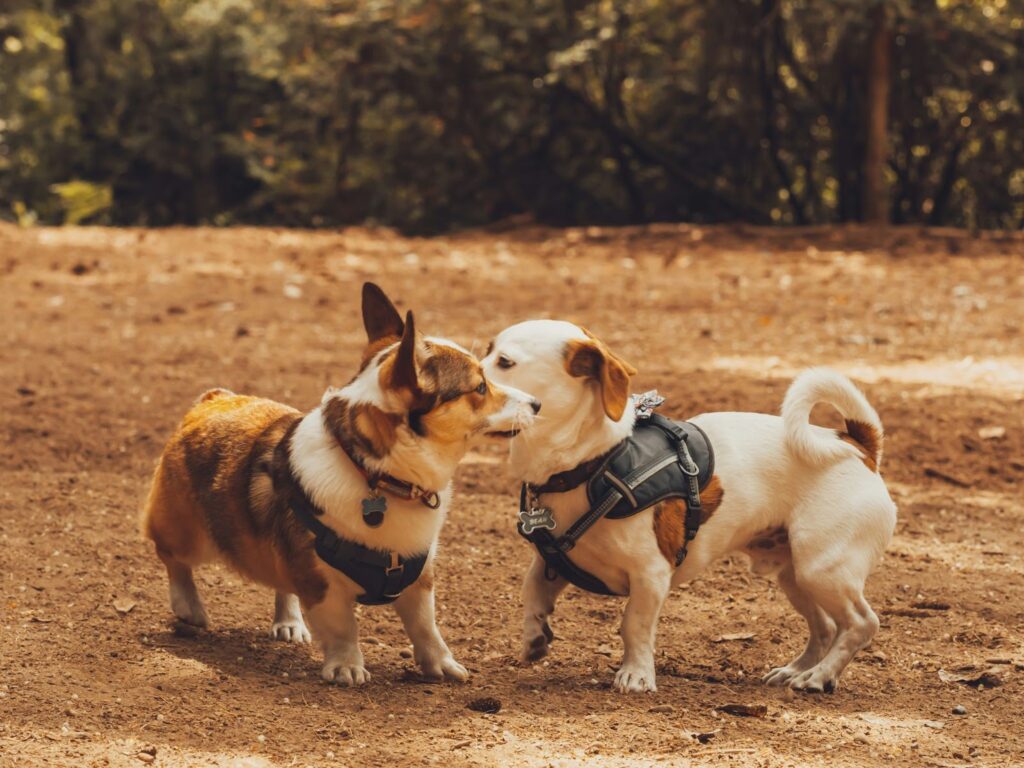
Conclusion
Building your dream dog park requires careful planning, thoughtful design, and prioritizing the safety and well-being of both dogs and their owners. A well-designed dog park provides a valuable space for dogs to socialize, exercise, and thrive.
By considering the essential features and following safety guidelines, you can create a dog park that becomes a beloved community asset, promoting a healthier and happier lifestyle for both humans and canines alike.
SteelCo has over 23 years of experience dropshipping customizable steel building materials for dog park buildings and recreational facilities nationwide.
Our team of experts, from Project Support Specialists and Sales Consultants to our in-house Designer, Architect, and more, ensures you have the necessary and customizable building kits to construct your dog park facility with industry-leading turnaround times and service.
—————————————–
Frequently Asked Questions
What is the recommended size for a dog park?
Dog parks should generally be between 0.5 and 1 acre in size. This provides sufficient space for amenities like separate areas for small and large dogs, as well as an entrance and transition area.
How can I fund a dog park project?
In order to fund a dog park project, you can consider several options. This may include applying for grants from organizations like the Doris Day Animal Foundation or the PetSafe Bark for Your Park competition, which supports community dog parks. Additionally, funding can be raised through local events, donations from community members, and business sponsorships.
What are the legal considerations for building a dog park?
Building a dog park involves various legal considerations that ensure the safety of its users and the surrounding community. It is crucial to research and comply with local zoning regulations and obtain necessary permits before commencing construction. This includes ensuring the chosen location is suitable for a dog park and adhering to specific requirements regarding size and fencing.
How much does it cost to build a dog park?
Depending on size and amenities, the cost to build a dog park can range significantly. A basic, small dog park can be as inexpensive as $10,000 to $20,000, whereas larger parks with premium amenities can easily surpass $200,000.
To ensure an accurate estimate, it’s crucial to factor in ongoing maintenance and repairs. Consulting local contractors and staying informed about local regulations and specific requirements is highly recommended to gain a more precise understanding of the financial implications.
What type of fencing is best for a dog park?
The best type of fencing for a dog park building is typically made from metal due to its durability cost-effectiveness and ability to withstand dogs’ wear and tear. To prevent dogs from jumping over it, it’s recommended to choose a fence that is at least 6 feet tall. Metal options include chain link, wrought iron, or aluminum, which are all strong and can be designed to various heights.







